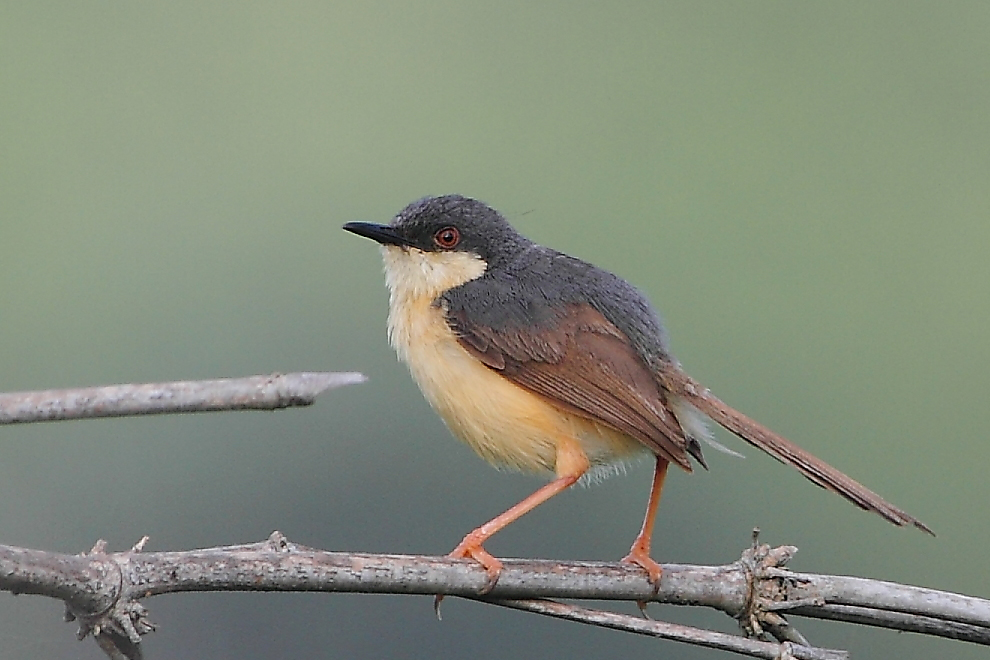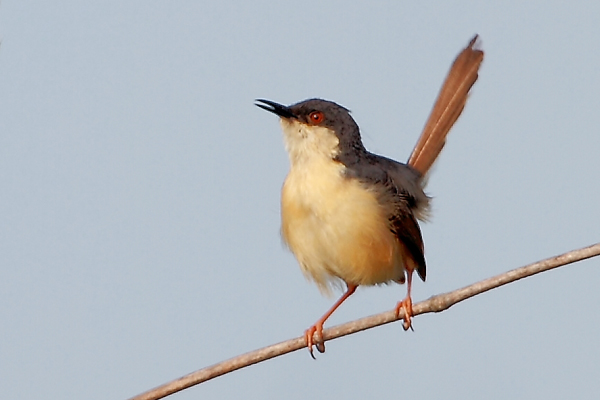As someone who had been recently introduced to this fascinating hobby of birdwatching, one of the first birds that I got familiar with was the Ashy Prinia. We had moved into a newly built house on the outskirts of the Bangalore. There was open space all round. Not a day went by without seeing this bird. The appearance, the call, the song, the usual perches, the usual activities, all became too familiar over a period of time. Their alarm calls would promptly take me to the garden to check out if everything was alright. On occasion, the domestic tom cat that was prowling would be shooed away. All this created that sense of familiarity and bonding.
However, the familiarity with the bird increased when a pair of Ashy Prinias decided to build their nest in our wild garden. They built their nest for several years generally in a shrub and placed below 4 ft from the ground. Knowing a bit of about birds and their habits, I decided to do a little experiment. I tied some cotton wool to a twig in the garden so that it would be visible to the nesting prinias. Having done so, I came inside the house and stationed myself near a window overlooking the garden. To my great surprise, I observed the birds taking some cotton to build their nest! When the nest was completed, I noticed that the cotton fibres were used to stitch two leaves together and also to tether the nest to the twigs amidst which it was placed. I was quite elated.

This prompted me to carry on with more observations on the bird and its nesting behaviour. Eventually, at the end of a couple of seasons, I had spent in excess of 400 hrs observing this bird. Almost every aspect of the bird’s behaviour during the breeding season was noted. The male sitting on an electric wire and singing to proclaim his territory, the pair chasing intruders, bringing in the first strand of fibre to build the nest, mating, incubation by both the parents and eventually the parents together toiling to feed the ever hungry chicks, for that matter every action of the pair trying to raise a family were all observed. What a revelation it was!
All these observations as I mentioned earlier were made in an urban garden. Now, you may say that I was on the city outskirts. But the nice thing about the Ashy Prinia is that it seems to have become comfortable in the urban space. I have over the years seen these birds nest in the midst of leaves in potted plants kept on the terrace of a single storied house! These birds even today are not uncommon in the cities.

These perky little birds, smaller than a sparrow, can be encouraged if only you ensured some vegetation wherever possible. This could be in the form of a small garden (i.e. if you have the space) or a cluster of potted plants. If they do not nest in your garden, they may still visit your garden to find food! This will give you an opportunity to enjoy seeing them sit on an exposed perch, watch their antics, moving about with their tail held up, listen to their calls, and more.
Some results of the observations can be read here – http://www.archive.org/stream/BirdConservationStrategies/BirdConservationIndia#page/n227/mode/1up